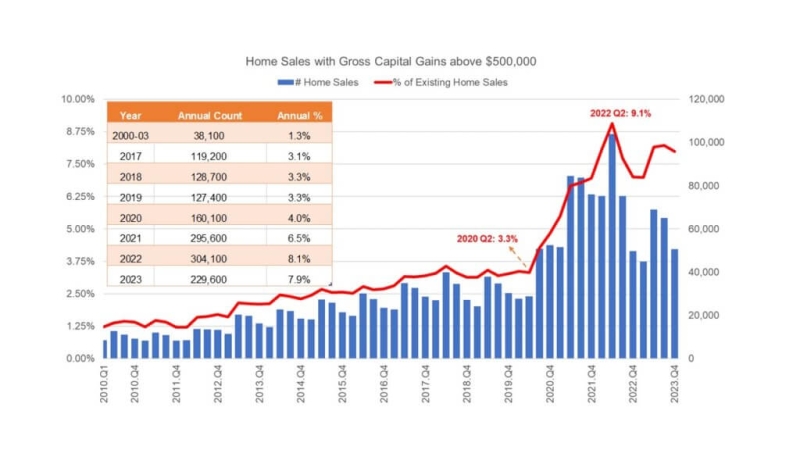Advertisement
The Regulatory Burdens of Dodd-Frank

Let it not be said that regulations are ever “easy enough” to implement in these post-crash times! Of course, this view presupposes that we know which regulations to factor in and which ones to factor out. It presupposes that we know which ones are relevant and which ones do not apply. It presupposes that we are in a position to keep track of new regulatory requirements, how they impact existing regulations, and how they supersede existing regulations. And it presupposes that we have sufficient time, resources, and focused energy to implement the regulations, without putting a deep drain on the already compressed margins caused by a real estate market in free fall and a loan origination market with low interest rates that have only one way to go … up!
The other day, a good friend and longtime client of ours, when considering all the new regulations his publicly traded firm is implementing and would have to put in place due to the Dodd-Frank Act, blurted out to me in a paroxysm of frustration, "What have we done to deserve this?" Indeed.
So, just how burdensome a burden is the Dodd-Frank regulatory burden?
Burden? What burden?
Having read, outlined and written about the 2,319-page Dodd-Frank Wall Street Reform and Consumer Protection Act, I will vouch for the amazing complexity and regulatory intricacies that abound within it.1 If you want a brush-up primer on Dodd-Frank, as it pertains to mortgage banking, you can read some of my published articles.2 In addition, my firm has issued numerous newsletters that we have sent to you regarding Dodd-Frank.3
The Merriam-Webster Dictionary defines the word "burden" in two basic ways: (1) something that is carried, such as a load, or it may be a duty, or a responsibility; and (2) something oppressive or worrisome. From my admittedly non-scientific polling, it seems clear to me that the management of many financial institutions believe that Dodd-Frank satisfies both definition (1) and definition (2). Certainly, management and boards of directors almost universally want to fulfill their duties and responsibilities; however, what I hear most often is that they consider the duties and responsibilities that flow from Dodd-Frank to be oppressive and worrisome.
The view about Dodd-Frank that I have received from management, at financial institutions and from industry leadership, is so pandemically against the “burden” of Dodd-Frank that it is hard to make a case for asserting that nefarious lobbyists in D.C. are deliberately misleading the public and trying to eviscerate this legislation on behalf of financial interests. Everybody agrees that Dodd-Frank is landmark legislation. But the view is that, in many aspects of Dodd-Frank, the legislation is like heaving the Hulk's sledgehammer, when a nimble scalpel would be much more effective in providing some needed remedies to the financial system.
Keeping track
Interestingly, certain members of the political class have been pushing back all along, alleging that Dodd-Frank is a burdensome onslaught that the financial system simply cannot bear. Most recently, on April 17, the House's Financial Services Committee notified the public about a new tool that it developed, called the Dodd-Frank Burden Tracker, which is, to use the Committee's description, "an online resource to help the public keep track of all the new government rules and red tape required by the Dodd-Frank Act.”4
Here is the Committee's analysis, which I must leave unchallenged for the time being, of the effects of Dodd-Frank:
“Dodd-Frank, passed by Congress in 2010, mandates that government regulators write over 400 new rules and requirements that will be imposed on the private sector. Since the law was signed by President Obama in July 2010, the Dodd-Frank Burden Tracker reveals:
►Regulators have written 185 of the 400 rules;
►These 185 rules consume 5,320 pages;
►It will take private sector job-creators 24,035,801 hours every year to comply with these first 185 Dodd-Frank rules.”5
The mathematician in me cannot help but see these numbers in percentages and common ratios:
►The percentage of new rules written versus the total: 46% (46% of the new rules have been written which, of course, is another way of saying that 54% of the new rules are not yet written).
►For each rule, the number of pages describing the rule: 1:28.75 (one rule consumes 28.75 pages).
►The number of private sector, annual hours to comply with each of the first 185 rules: 129,923:1 (the first 185 new rules take a private sector, annual labor output of 129,923 hours to implement).
That last statistic is a bit skewed, inasmuch as there are only 8,760 hours in a year. But the number 24,035,801 refers to so-called “total man hours.” I think you get the point!
Nevertheless, consider those 400 new rules: the huge number of deadlines contained in the 400 rulemakings required by Dodd-Frank is obviously overwhelming the regulatory agencies as well as the private sector.
And I haven't even yet mentioned the estimated cost!
The Congressional Budget Office has estimated that it will cost well over $3 billion over the next five years to implement Dodd-Frank. Indeed, in an Atlantic Magazine article published last year, entitled “Dodd-Frank's Derivatives Rules Could Cost Main Street $1 Trillion,” Daniel Indiviglio estimated that there could be up to $1 trillion in broader economic costs resulting from Dodd-Frank.6
The Burden Tracker
We can play around with statistics all day, often using them for or against our arguments. But the Committee has done some of the work for us in the form of its Dodd-Frank Burden Tracker—which I shall call the Burden Tracker. The April 17 version is available from our Library, if you want to download all 20 pages.7 The Committee will update the Burden Tracker periodically.
If you want a sense of the broad range of Dodd-Frank, the following is a list of the agencies, by their acronyms, that the Burden Tracker cites as affected by Dodd-Frank's new rules: FDIC, OCC, FRS, OTS, NCUA, CFTC, SEC, CFPB, FSOC, FHFA, HUD, IRS, FTC, DOE, DO, VA and the FCA.
The Burden Tracker totals the number of new rulemaking pages associated with each Dodd-Frank mandate, and the stages of such rulemaking thus far are interpretations, final rules, proposed rules, interim final rules, request for public comment, notice, order, joint notice, notice of proposed rulemaking by cross-reference to temporary regulations, interim final rule with request for public comment, further notice of proposed rulemaking, and acceptance of standard.
Consequences
Dodd-Frank actually created 13 new regulatory agencies, and it eliminated only one: The Office of Thrift Supervision (OTS).
One report I have read, issued by the Committee, entitled “One Year Later: The Consequences of the Dodd-Frank Act,” states that Dodd-Frank creates more than 2,600 new positions at regulatory agencies, with some agencies, like the Office of Financial Research, lacking any size limitations on their budgets or staffs.
It seems to me that something is amiss in the way this legislation is being implemented, when Rep. Randy Neugebauer (R-TX), Chairman of the Committee's Oversight and Investigations Subcommittee, can opine that "it will take businesses more time to comply with Dodd-Frank rules than it took to build the Panama Canal."8
I'll let you reach your own conclusions.
Jonathan Foxx, former chief compliance officer for two of the country’s top publicly-traded residential mortgage loan originators, is the president and managing director of Lenders Compliance Group, a mortgage risk management firm devoted to providing regulatory compliance advice and counsel to the mortgage industry. He may be contacted at (516) 442-3456 or by e-mail at [email protected].
Footnotes
1—Federal Register, Vol. 76, No. 91, Wednesday, May 11, 2011, Proposed Rules, 12 CFR Part 226, Regulation Z-Truth in Lending Act. [Regulation Z; Docket No. R–1417] H.R. 4173: Dodd-Frank Wall Street Reform and Consumer Protection Act, 111th Congress (2009-2010): "A bill to promote the financial stability of the United States by improving accountability and transparency in the financial system, to end "too big to fail", to protect the American taxpayer by ending bailouts, to protect consumers from abusive financial services practices, and for other purposes." Sponsored by Rep. Barney Frank (D-MA) and Sen. Christopher Dodd (D-CT).
2—Foxx, Jonathan, “Landmark Financial Legislation: New Rules for Mortgage Originators–Part I: Reformation and Regulations,” National Mortgage Professional Magazine, August 2010, Volume 2, Issue 8, pages 28-42; “A New Era of Mortgage Reform–Part II: Legislation–Reactive or Proactive,” National Mortgage Professional Magazine, September 2010, Volume 2, Issue 9, pages 22-28; “A New Era of Mortgage Reform–Part III: Consumer Financial Protection-Bureau and Bureaucracy?,” National Mortgage Professional Magazine, October 2010, Volume 2, Issue 10, pages 22-40.
3—For our Newsletters, please visit the Articles and Newsletters section of our Web site: www.LendersComplianceGroup.com.
4—Financial Services Committee Unveils “Dodd-Frank Burden Tracker,” House Committee on Financial Services, Press Release, April 17, 2012.
5—Ibid.
6—Indiviglio, Daniel, Dodd-Frank’s Derivatives Rules Could Cost Main Street $1 Trillion, The Atlantic, June 30, 2010.
7—Download the Dodd-Frank Burden Tracker (April 17, 2012) from our Library/Issuances-2012.
8—Dodd-Frank Burden Tracker, House Committee on Financial Services, Press Release, April 17, 2012.
About the author





